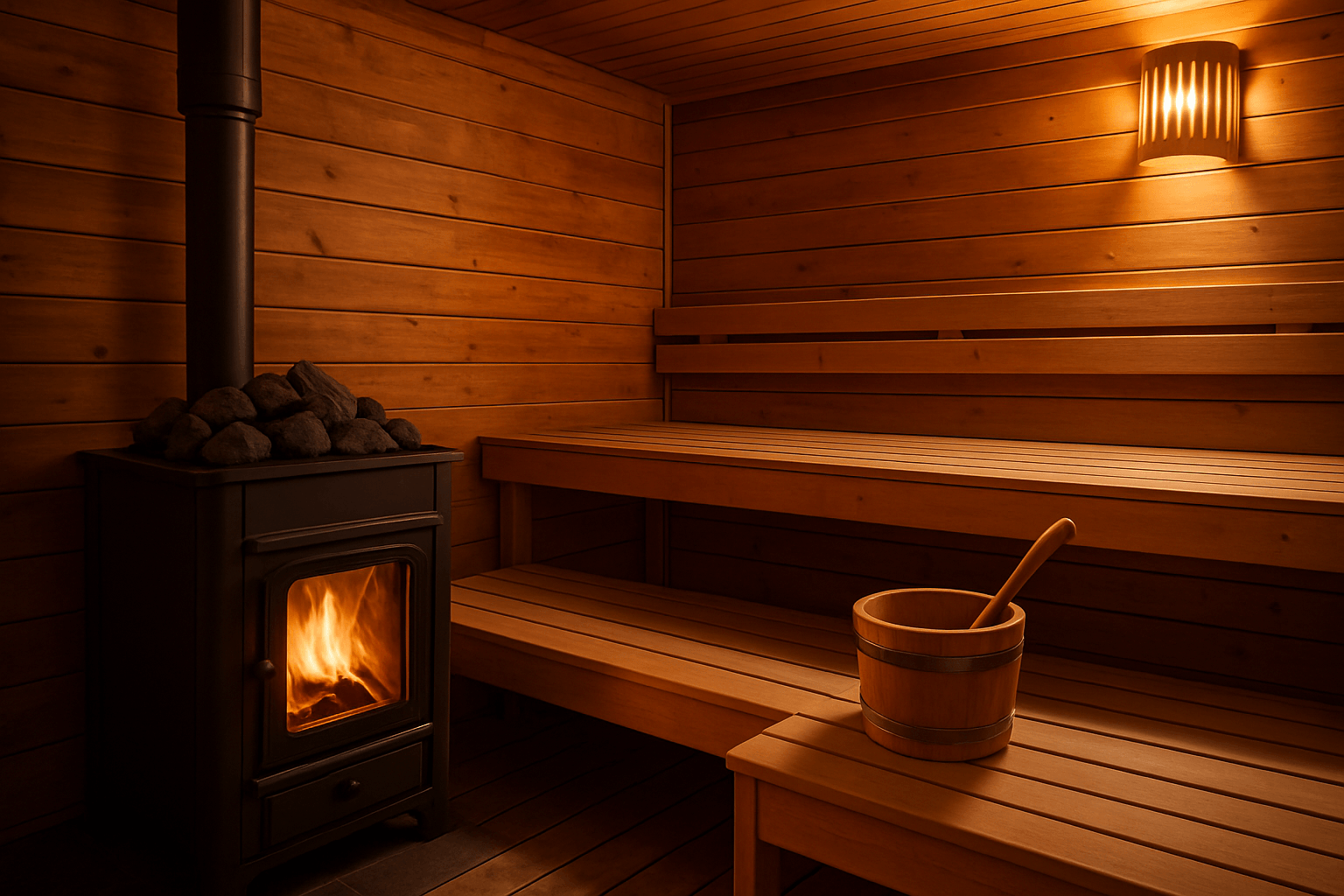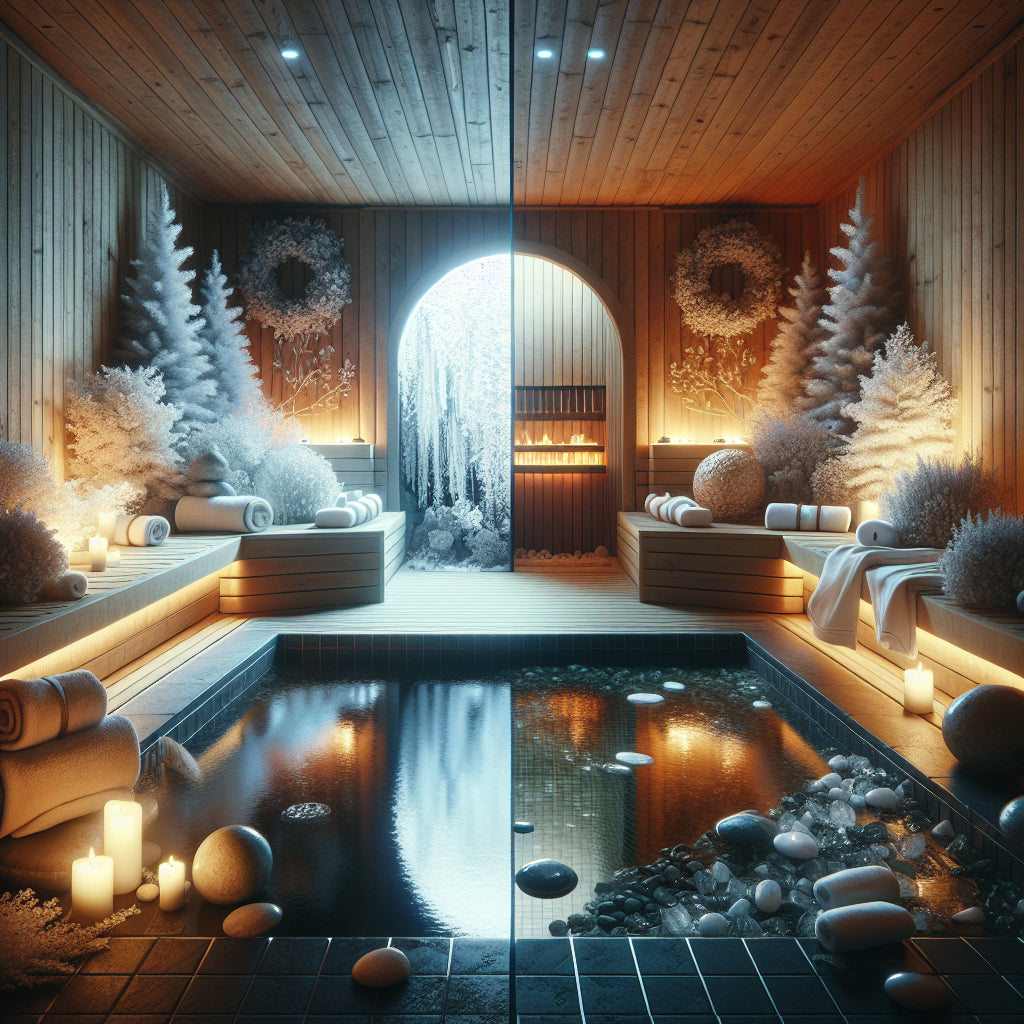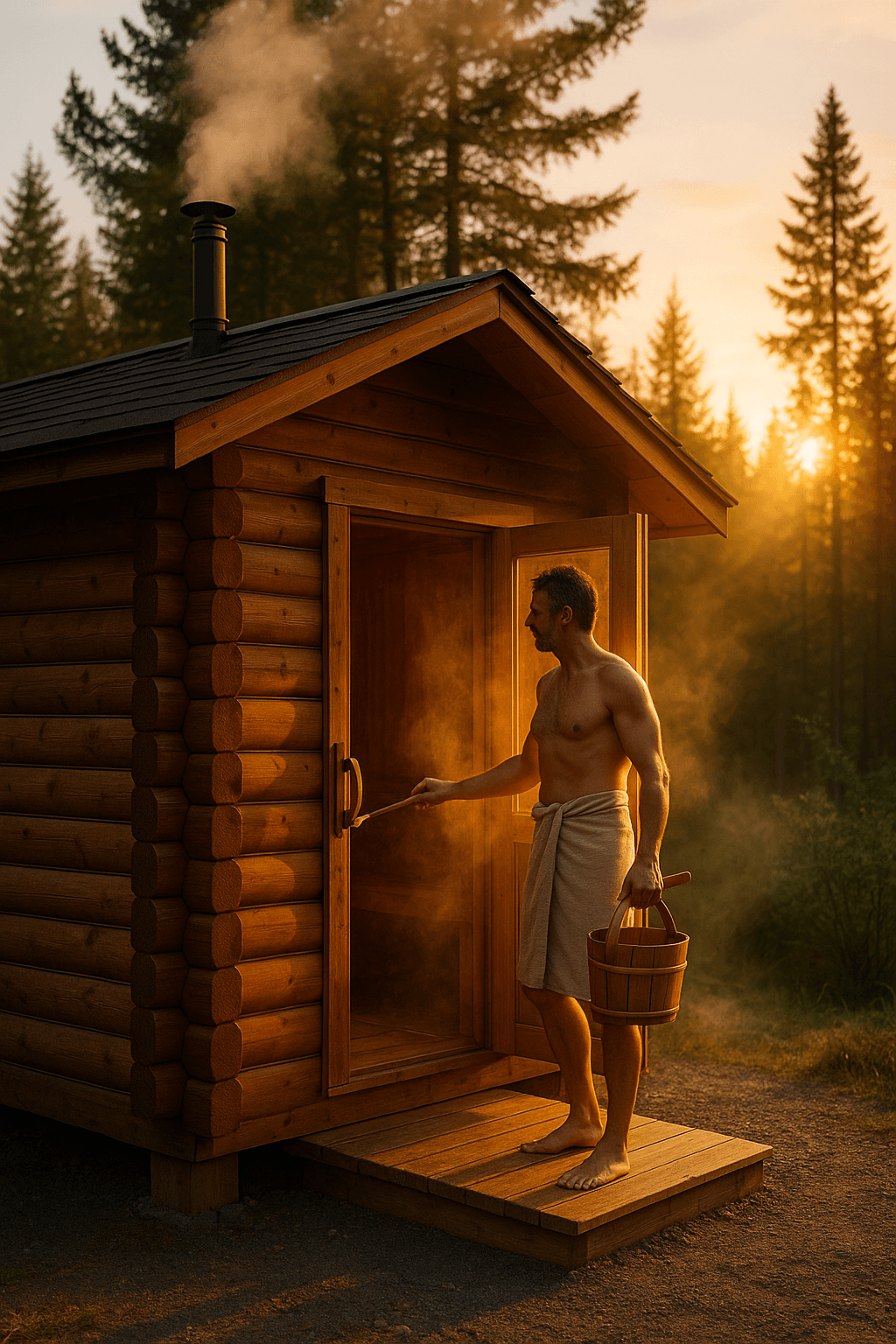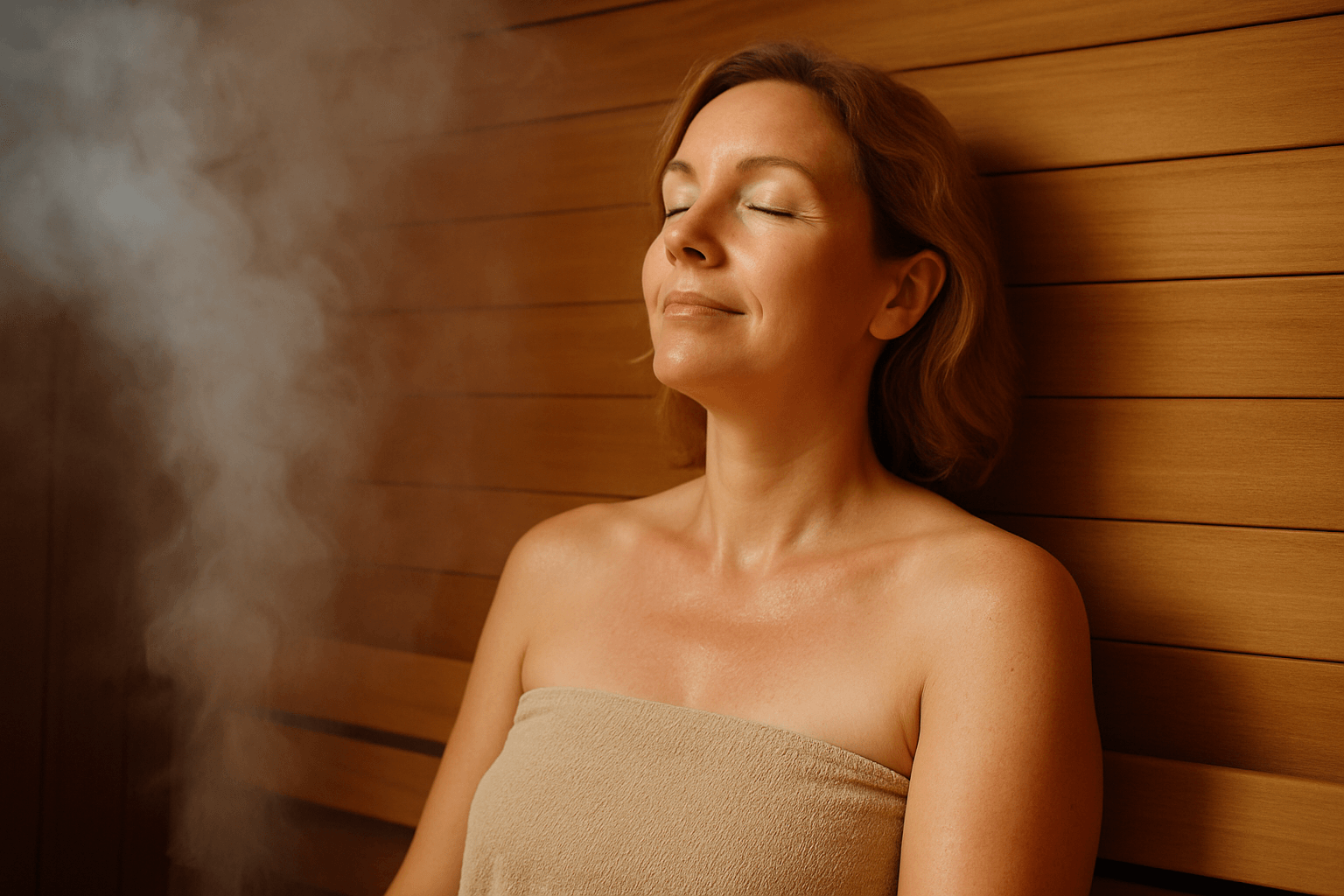What Wood Is Best for Your Sauna?
The Allure of Wood in Sauna Design
When it comes to creating an authentic sauna experience, wood isn't just a building material—it's the soul of your wellness sanctuary. The right wood choice transforms your sauna from a simple hot room into a therapeutic retreat that engages all your senses while standing the test of time.
Why Wood Choice Matters More Than You Think
Selecting the proper wood for your sauna goes far beyond aesthetics. Research from the University of British Columbia and FPInnovations has shown that natural wood surfaces actually lower stress levels by reducing sympathetic nervous system activation compared to synthetic materials. In a space designed for relaxation and healing, this psychological benefit is invaluable.
From a practical standpoint, sauna wood needs to perform under extreme conditions. It must withstand temperatures exceeding 180°F, resist constant moisture fluctuations, and remain comfortable against bare skin. The wrong choice can lead to warping, resin seepage, or even burns from overheated surfaces.
Quality sauna wood delivers four critical benefits:
Temperature Management: The best woods remain cool to the touch even at high heat, preventing discomfort or injury during your session.
Moisture Resistance: Superior dimensional stability prevents warping, cracking, and decay despite humidity swings.
Aromatic Experience: Natural wood compounds enhance the therapeutic atmosphere while providing antimicrobial properties.
Longevity: Properly selected wood can last decades with minimal maintenance.
Top Wood Species for Sauna Construction
Western Red Cedar
Western red cedar has earned its reputation as the gold standard for sauna construction. According to research published in the Journal of Wood Science, this species emits natural volatile compounds with antifungal and antibacterial effects, creating a healthier sauna environment.
Beyond its microbial resistance, cedar offers a distinctive aromatic profile that many sauna enthusiasts consider essential to the authentic experience. The wood's low density means it stays comfortable against skin even during extended sessions, while its natural oils provide inherent protection against moisture damage.
The primary consideration with cedar is cost—it typically runs higher than alternatives. However, when you factor in its exceptional longevity and minimal maintenance requirements, the investment often proves worthwhile over your sauna's lifetime.
Hemlock
For those seeking a more budget-friendly option without sacrificing quality, hemlock delivers excellent value. This North American softwood features a smooth, uniform grain that creates a clean, modern aesthetic. Its light color brightens sauna interiors, which can be particularly appealing in smaller spaces.
Hemlock's thermal properties rival cedar's, remaining cool and comfortable during use. The main tradeoff is aroma—hemlock lacks the distinctive scent that cedar provides. For some users, this neutral quality is actually a benefit, especially those sensitive to strong fragrances.
Aspen
Aspen has gained popularity as the hypoallergenic choice for sauna interiors. This hardwood is virtually scent-free and resin-free, making it ideal for individuals with sensitivities or allergies. Research from the Finnish Technical Research Centre indicates that aspen releases minimal volatile organic compounds, contributing to superior indoor air quality.
The wood's pale, almost white appearance creates a bright, Scandinavian-inspired aesthetic that's become increasingly popular in modern sauna design. Its fine grain resists splintering, enhancing comfort during use.
Aspen does require proper sealing to prevent staining from tannin migration over time, but with appropriate maintenance, it delivers decades of reliable performance.
Thermally Modified Wood
Representing the cutting edge of sauna materials, thermally modified wood undergoes a specialized heat treatment process that fundamentally alters its cellular structure. A study published in Construction and Building Materials demonstrated that this process provides superior resistance to biological decay and dimensional instability—exactly what extreme sauna conditions demand.
The thermal modification process achieves durability comparable to tropical hardwoods without any chemical treatments, making it an environmentally responsible choice. Species like aspen and alder, when thermally treated, release even fewer VOCs than their untreated counterparts while gaining enhanced resistance to moisture and pests.
The treatment does darken the wood's appearance, creating rich, coffee-toned hues that many find appealing in contemporary sauna designs.

The Timeless Appeal of Wood-Burning Sauna Heat
While electric heaters offer convenience, traditional wood-burning saunas provide an experience that technology simply cannot replicate. The gentle crackle of burning logs, the subtle variations in heat intensity, and the primal connection to fire create a meditative atmosphere that deepens the sauna's therapeutic benefits.
Wood heat penetrates differently than electric heat, creating what enthusiasts describe as a "softer" warmth that feels more natural against the skin. This traditional heating method offers profound wellness benefits supported by extensive research. A meta-analysis in Mayo Clinic Proceedings confirmed that regular sauna use improves cardiovascular health, enhances circulation, and supports overall longevity.
The ritualistic aspects of wood-burning saunas—preparing the fire, tending the flames, and regulating temperature manually—foster mindfulness and stress reduction. This active participation transforms sauna bathing from passive relaxation into an intentional wellness practice.
Choosing Your Wood Sauna Heater
When selecting a wood-burning heater, several factors determine optimal performance and safety. Your sauna's volume dictates heater capacity—undersized units struggle to reach proper temperature, while oversized models can create uncomfortably intense heat that's difficult to regulate.
Consider these key specifications:
Heating Efficiency: Quality heaters reach optimal temperature within 45-60 minutes. Look for models with good insulation and efficient combustion chambers.
Safety Features: Proper ventilation systems, heat shields, and clearance specifications protect both users and your sauna structure.
Design Integration: The heater should complement your wood choice and overall aesthetic. Stainless steel and soapstone finishes pair beautifully with different wood tones.
Popular wood-burning models include the Harvia M3 for its compact efficiency, the Finnleo Wood Burning Sauna Stove for its blend of tradition and safety, and the Kuuma Vapor-Fire for exceptional clean-burning technology. If you're ready to explore your options, browse our complete selection of sauna heaters designed for various sauna sizes and styles.
Matching Wood to Your Sauna Type
Different sauna styles benefit from specific wood characteristics. Traditional outdoor barrel saunas often showcase cedar's weather resistance and aromatic qualities, while modern indoor installations might favor aspen's clean aesthetic and hypoallergenic properties.
If you're planning a traditional sauna build, cedar or thermally modified wood provides the authenticity and durability that honors centuries of sauna culture. For contemporary infrared saunas, lighter woods like aspen create the minimalist aesthetic that complements modern wellness spaces.
The key is aligning wood properties with your intended use, budget, and aesthetic preferences while ensuring the species can handle your sauna's specific thermal and humidity conditions.
Frequently Asked Questions
What is the most durable wood for a sauna?
Thermally modified wood, particularly treated aspen or alder, offers the best combination of longevity and performance. The heat treatment process significantly enhances resistance to moisture damage, dimensional changes, and biological decay. For untreated options, Western red cedar provides excellent natural durability thanks to its inherent oils and antimicrobial properties.
Does cedar smell too strong in small saunas?
Cedar's aroma is most pronounced when the wood is new and during initial heating cycles. The scent moderates over time and with use. Proper ventilation allows you to control intensity—most users find the natural fragrance pleasant and therapeutic rather than overwhelming. If you're particularly scent-sensitive, aspen or hemlock offer virtually odor-free alternatives.
Is pine or spruce suitable for sauna interiors?
These species are generally avoided for sauna interiors because they contain higher resin content that can seep out under high heat, creating sticky surfaces and unpleasant odors. They're occasionally used for structural framing behind interior paneling but should not be used for benches, backrests, or wall surfaces that contact users.
What makes thermally treated wood more sustainable?
Thermal modification uses only heat and steam—no chemicals whatsoever—to permanently alter wood's cellular structure. This natural process extends the lifespan of more readily available species like aspen, reducing demand for slow-growing tropical hardwoods. Many thermally treated products also carry FSC certification, ensuring responsible forest management.
How does the type of wood affect sauna temperature comfort?
Wood species vary significantly in thermal conductivity and density. Low-density woods like cedar and aspen heat up slowly and remain comfortable against bare skin even at high sauna temperatures. Denser hardwoods can become uncomfortably hot to touch. This is why benches and backrests should always use lower-density species regardless of what wood you choose for walls.
Are there hypoallergenic options for sensitive users?
Aspen and alder are the top hypoallergenic choices. Both species are naturally resin-free and emit minimal volatile compounds, making them suitable for individuals with chemical sensitivities, respiratory conditions, or allergies. Thermally treated versions of these woods further reduce emissions while providing enhanced durability.
How do I maintain sauna wood to maximize its lifespan?
Regular maintenance is surprisingly simple. Allow your sauna to fully dry between uses by leaving the door open. Wipe benches with a damp cloth to remove perspiration and oils. Avoid harsh cleaning chemicals—mild soap and water suffice for deeper cleaning. Light sanding every few years refreshes surfaces and removes any minor staining. Proper ventilation during and after use is your best defense against moisture-related damage.
Creating Your Perfect Sauna Experience
Selecting the right wood for your sauna represents an investment in wellness, comfort, and long-term enjoyment. Whether you're drawn to cedar's aromatic tradition, aspen's hypoallergenic properties, or thermally modified wood's cutting-edge durability, understanding each species' unique characteristics ensures your choice aligns with your needs.
The wood you select will influence every sauna session for years to come—its visual warmth, aromatic presence, and tactile comfort become an integral part of your wellness routine. Take time to consider not just immediate costs but long-term value, maintenance requirements, and how the wood's properties align with your sauna goals.
Ready to start building your dream sauna? Explore our full range of premium sauna options to find the perfect match for your space and lifestyle.







Leave a comment
This site is protected by hCaptcha and the hCaptcha Privacy Policy and Terms of Service apply.